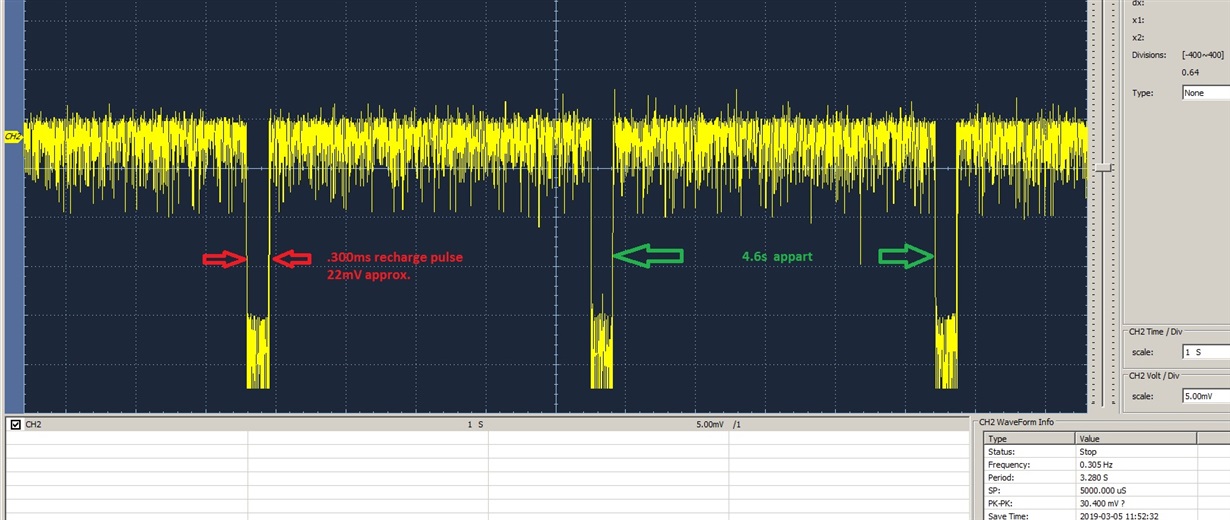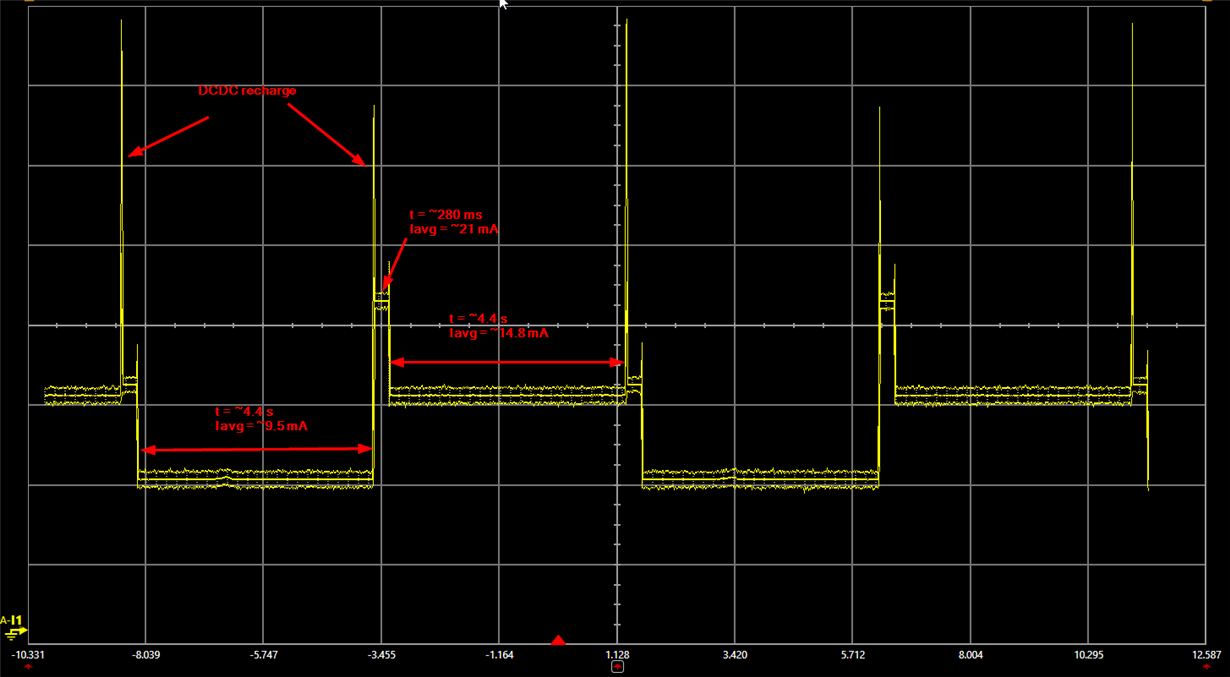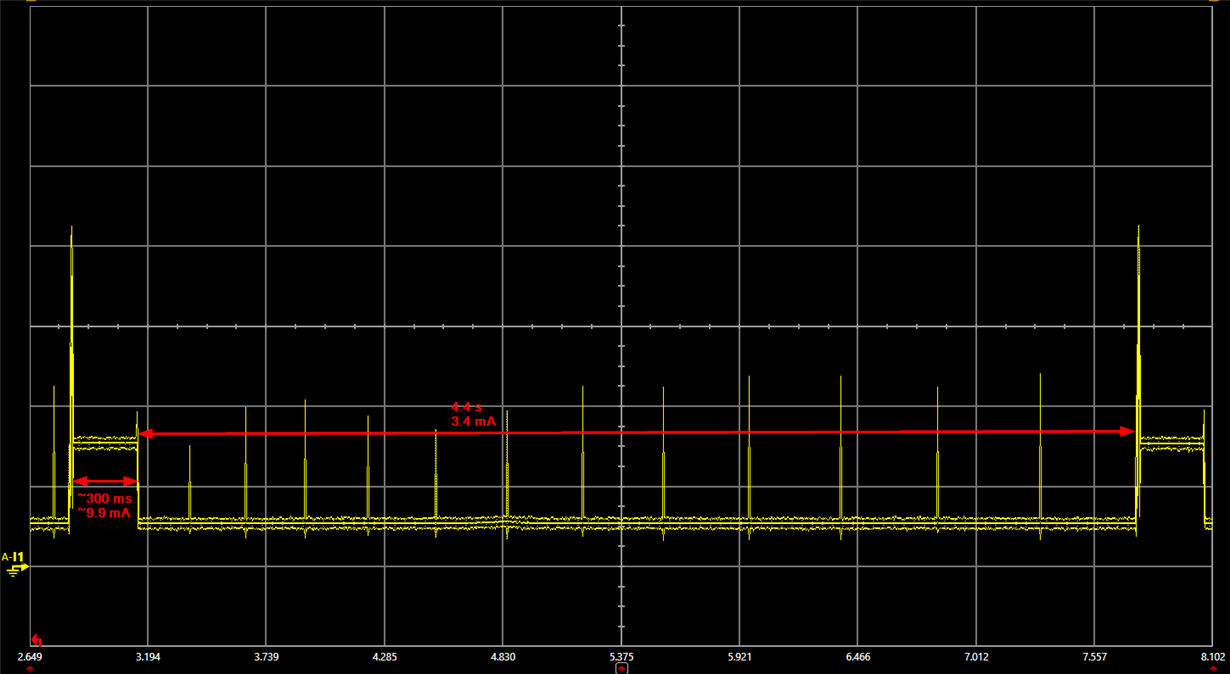Part Number: CC1310EMK
Hi everyone,
I am currently evaluating the CC13xxEM-7XD-7793 for current consumption. I am using
the SmartFR06 Evaluation Board PCB v1.2 and using the designated VDD to EM as instructed
to measure current in the SmartRF06 Evaluation Board PDF (Figure 24 Measuring Current Consumption Using Jumper J503).
I followed the User Guide and have removed the recommended jumpers to isolate the SmartRF06 EV from the CC13XX EVB.
Here are my readings and would like someone from TI's to verify my findings or let me know otherwise:
Using the USB as a Power Source
Awake Current Consumption: 6.56mA for approx. 1minute
Sleep Current Consumption: 81uA for approx. 1minute
During Sleep short burst: 5.7mA approx. 300ms in duration
Using the AAA battery as a power source:
Awake Current Consumption: 11.4mA for approx. 1minute
Sleep Current Consumption: 4uA for approx. 1minute
During Sleep short burst: 4.5mA approx. 300ms in duration
I also found that sometimes on power up the unit will come up
in the sleep cycle and sometimes it comes up in the wake cycle.
This assumption is based on viewing the current readings, because
there is no viewing aid on the CC13xxEM board.
Thank you in advance.





